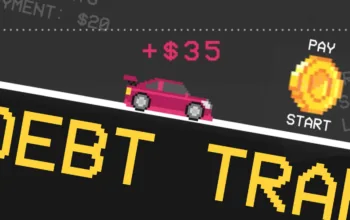The Court mostly reinstates Idaho’s ban on transgender health care for children.
The Supreme Court handed down a strange set of opinions on Monday evening, which accompanied a decision that largely reinstates Idaho’s ban on gender-affirming care for minors. The ban was previously blocked by a lower court.
None of the opinions in Labrador v. Poe spend much time discussing whether such a ban is constitutional — although Justice Brett Kavanaugh’s concurring opinion does contain some language suggesting that he and Justice Amy Coney Barrett will ultimately vote to uphold the ban.
Rather, seven of the nine justices split into three different camps, each of which proposes a different way that the Court should handle cases arising on its “shadow docket,” a mix of emergency motions and other matters that the Court decides on an expedited basis — often without full briefing or oral argument. The Labrador case arose on the Court’s shadow docket.
Indeed, Idaho’s lawyers did not even attempt to defend its restrictions on gender-affirming care on the merits. Instead, they argued that the lower court went too far by prohibiting the state from enforcing its ban against any patient or any doctor.
A majority of the justices agreed with the state, ruling that the ban cannot be enforced against the actual plaintiffs in this case, two trans children and their parents, but that it can be enforced against anyone who has not yet sought a court order allowing them to receive gender-affirming care.
How the justices divided in this case
While none of the justices discussed at much length whether they think the Constitution permits Idaho to ban transgender health care, every justice but Chief Justice John Roberts and Justice Elena Kagan joined one of three opinions laying out how they think the Court should respond to parties asking them to provide relief on the Court’s shadow docket.
Ordinarily, the Supreme Court waits until a case has been fully litigated in the lower courts before weighing in on a case in any way. Under its normal process, the Court also typically receives hundreds of pages’ worth of briefing on a case, hears oral argument, and spends months deliberating on how to decide it.
Cases on the shadow docket, by contrast, ask the justices to bypass this ordinary process, typically to block a lower court order before the case has been fully resolved by a lower appellate court. The justices used to grant shadow docket relief very rarely — most often in death penalty cases where the inmate would be executed if the Court did not intervene swiftly — but it started granting it very often in the Trump administration after Trump’s Justice Department started routinely requesting shadow docket relief.
The justices divided into three camps in the Labrador case, with each camp joining concurring or dissenting opinions laying out how they think shadow docket cases should be resolved moving forward.
Justice Neil Gorsuch, joined by Justices Clarence Thomas and Samuel Alito, faulted the lower court for issuing a “universal injunction” that prohibits Idaho from applying its anti-trans law to any party. Gorsuch argued that courts should issue more limited orders when a state or federal law is successfully challenged, which only prevent the state or the federal government from enforcing its law against the specific plaintiffs who brought the successful challenge.
Kavanaugh, joined by Barrett, argued that, in shadow docket cases, the Court often “has little choice but to decide the emergency application by assessing likelihood of success on the merits.” That means the Court’s decision to grant shadow docket relief will often turn on whether they think the party seeking such relief should ultimately prevail when the courts reach a final decision in the case.
That’s potentially very bad news for transgender children. Though Kavanaugh’s opinion does not discuss whether he thinks Idaho’s law is constitutional, the fact that he voted to reinstate the law (except with respect to the two plaintiff families in this case) suggests that he thinks Idaho has a “likelihood of success on the merits” when the ultimate question of whether trans health care bans are legal reaches the Supreme Court.
Finally, Justice Ketanji Brown Jackson, joined by Justice Sonia Sotomayor, argued that the Court should show more “restraint” when it is asked to grant shadow docket relief. She argues that “our respect for lower court judges — no less committed to fulfilling their constitutional duties than we are and much more familiar with the particulars of the case — normally requires an applicant seeking an emergency stay from this Court after two prior denials to carry ‘an especially heavy burden.’”
Although neither Roberts nor Kagan joined any of these opinions, Kagan briefly indicated that she would have denied the request to reinstate Idaho’s law in its entirety.
So who is correct? I have argued in the past in favor of Gorsuch’s approach. The kind of universal injunctions that Gorsuch rails against often allow a single judge to decide an entire state’s, or even the entire nation’s, policy. As more judges have claimed the power to issue such broad injunctions, many parties have sought out judges with particularly extreme views. And these judges often issue broad injunctions imposing a new, nationwide policy that few other judges would tolerate.
Of the three approaches outlined in the Labrador opinions, Gorsuch’s is the most likely to end this practice. Moreover, while liberals may be frustrated by the results in the Labrador case — an anti-trans law will go into effect and likely prevent many teens from receiving health care — the federal courts are dominated by Republican appointees. So a rule against universal injunctions is likely to benefit liberals more than it will benefit conservatives in the long run.
Yet, while a principled rule forbidding both Democratic and Republican judges from issuing universal injunctions is probably the fairest outcome, it’s far from clear that this Supreme Court is capable of such a principled approach. While Gorsuch frequently rails against universal injunctions in his opinions, his concern about them often evaporates once a lower court judge blocks a policy supported by Democrats.
Last year, for example, Gorsuch voted to leave in a place a Republican judge’s order blocking a federal policy prohibiting “ghost guns,” weapons designed to evade certain federal restrictions on gun sales.
Meanwhile, while Thomas and Alito joined Gorsuch’s Labrador opinion, their hypocrisy on the issue of universal injunctions is boundless. Among other things, Thomas and Alito were the only justices who supported several lower court judges’ attempt to block women throughout the country from using the abortion drug mifepristone.
The Labrador case fits this pattern. Thomas, Alito, and Gorsuch are perfectly willing to rail against universal injunctions when the winners are Republicans who oppose transgender rights. But it remains to be seen whether they will hew to the position they staked out in Labrador the next time the Biden administration asks them to reinstate a federal policy that was blocked by a Republican lower court judge.



